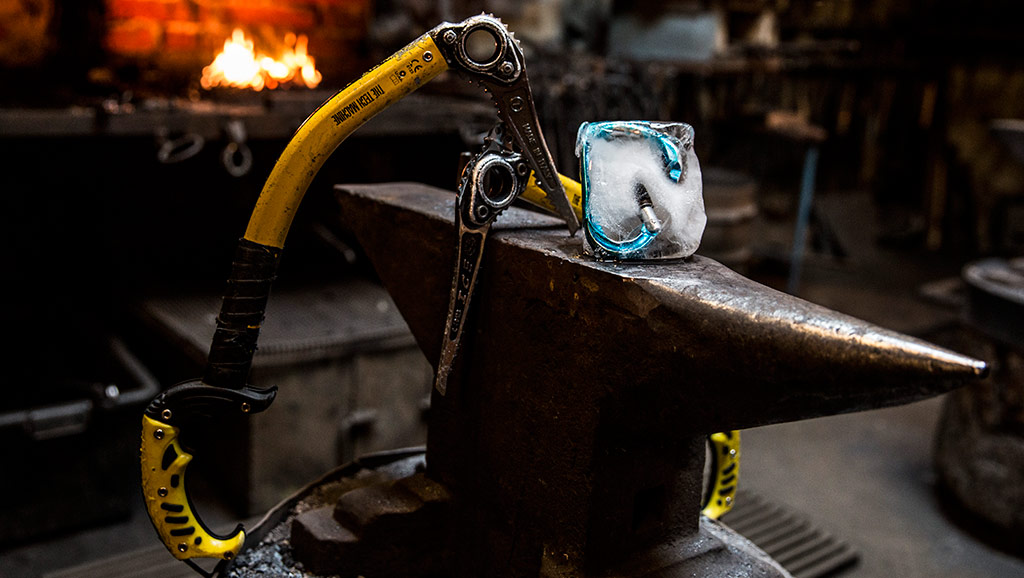Both, the Gasteinertal valley and the Maltatal valley, are for sure the two best known ice climbing valleys in the Austrian ice climbing scene. Due to global warming and the often deeper icefalls, they had to pass some of their fame on to the Felbertauern and Heiligenblut, nonetheless with good conditions they still offer a true paradise for all ice climbing fans! Due to the good traffic connection of the A10 Tauern motorway and the Mallnitz Schleuse (a motorail car lock), the areas can be reached quite quickly from Munich, Vienna & Salzburg, or one can react fast in case of weather changes.
register now
schedule
As our travel time is not too long, we offer one-day tours in this region, though the travel expenses will be charged additionally. If a multi-day programme is desired, the accommodation of the mountain guide must also be provided. Call us or write an e-mail, we will be happy to advise you and put together a suitable programme!
location / how to get to destination
The Gasteinertal valley lies in the heart of Austria, about 90 kilometres south of Salzburg. The big waterfalls of the Gasteinertal valley are in the Anlauftal valley, directly behind the car loading station of the Tauernschleuse (a motorail car lock). With this link you will find the best way to the Gasteinertal valley. www.gastein.com/service/anreise/
The travel to the Maltatal valley is very comfortable due to its geographical position directly at the A10 Tauern motorway or only 30 km away from the next train station Spittal / Millstätter See. Moreover, public transport connections are very good.
sleeping / food
Accommodation and food are not included in the price. In this region, accommodation is available in every price category. We recommend to book the accommodation early enough as especially in the high season (Christmas, February - March), it can be fully booked quickly.
Here are some addresses:
Bad Hofgastein
Malta
apparel and equipment list
Technical material is included in the price.
Since we do not climb constantly, there can be "standing times" in cold temperatures, so make sure to bring along enough warm clothes - one cools down quite quickly!
We recommend you bring light clothing of varying thickness to achieve an "onion system" for greater comfort. Cotton is not suitable as it quickly becomes cold upon getting wet. Skiing apparel, however, works well. Our recommendation: warm merino underwear and a fast warming down jacket.
We recommend:
- long underwear (bottom and top), synthetic, merino or wool
- warm pants (lined or fleece)
- warm fleece or long sleeve shirt (not cotton)
- lined jacket or vest, preferably down jacket
- waterproof jacket with hood (Gore-Tex or nylon)
- waterproof pants (Gore-Tex or nylon)
- socks (merino or ski socks)
- woolen cap or lined cap that protects your ears and fits under a helmet
- waterproof climbing gloves (2 pairs)
- solid mountain boots (in exceptional cases ski boots are also possible)
- gaiters if necessary
- Buff (neck protection)
- a minimum 25 litre backpack (space for clothing, snacks, drinks, climbing equipment)
- sun protection (glasses and cream)
- thermos or water bottle (already full!!!!)
- camera
- personal medicine
If you want to take your own technical material with you: (otherwise rental equipment included in the price)
- crampons: must fit the shoes and be easily adjustable, with vertical front teeth
- climbing harness: always with adjustable leg loops
- climbing helmet
- ice axe: steep ice axe
- screw carabines
- backup device: reverso, ATC or similar
details & insurance
NOT INCLUDED IN THE PRICE
- travel to destination
- drive to the respective ice climbing area or icefall
- accommodation costs before, during or after the courses
- travel expenses for the mountain guide
- accommodation for the mountain guide (for tours of 2 days or more)
- travel and cancellation insurance
- personal climbing apparel
- tip









